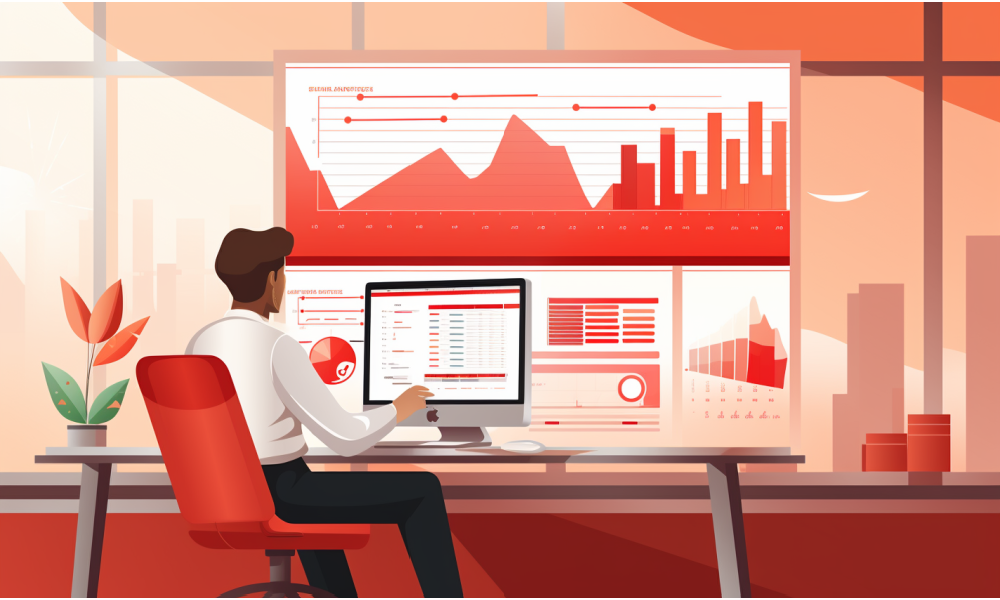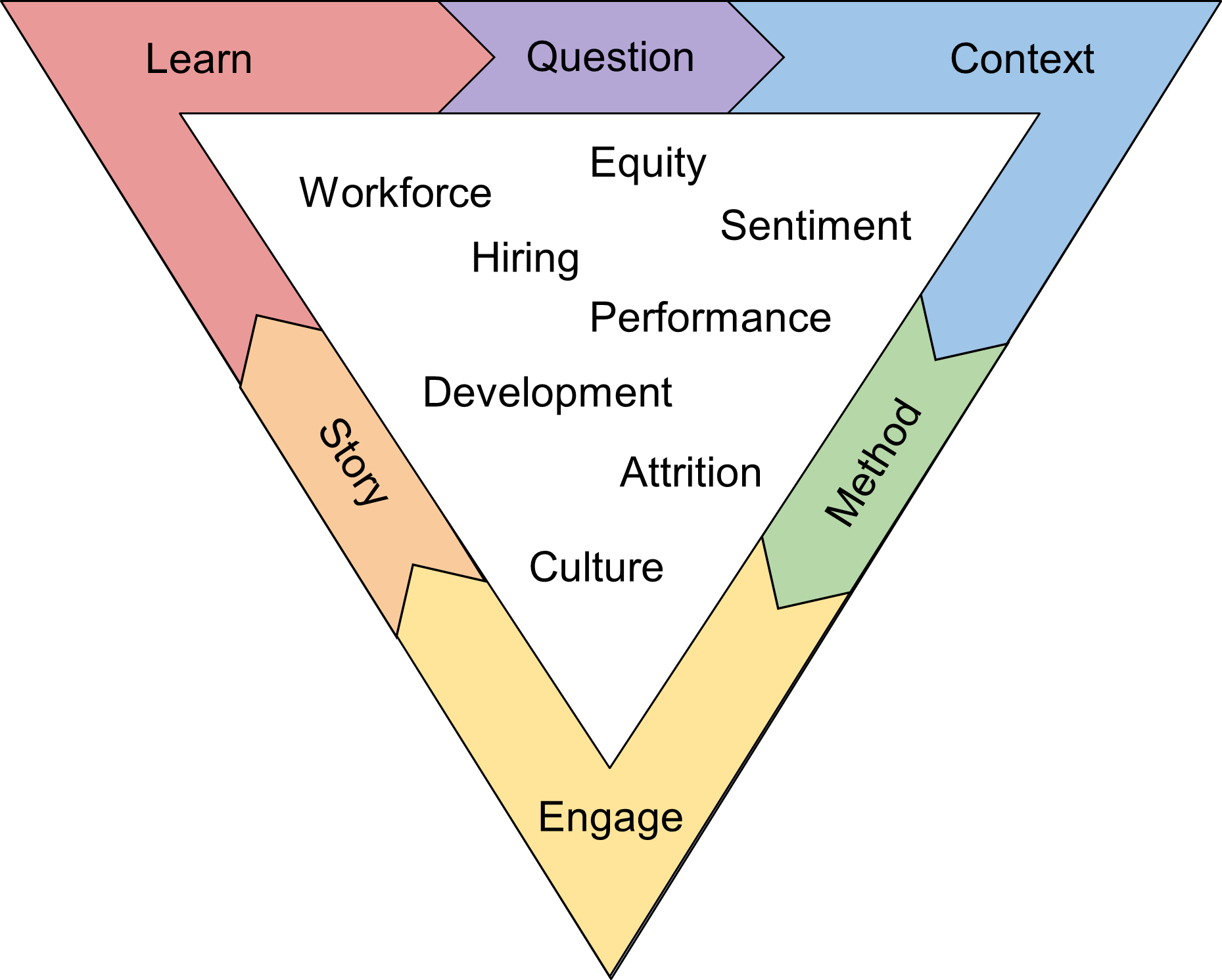The People Analytics Method: Why TikTok's Head of Global People Analytics prioritizes context not control
- 7 Min Read
Justin Purl, Head of Global People Analytics, TikTok, argues confused definitions, cautious confidentiality, and poor questions lead to bad people analytics. He introduces The People Analytics Method as a scientific approach for accumulating context that delivers impactful insights and supports HR decision-making
- Author: Justin Purl
- Date published: Sep 4, 2023
- Categories

 If you think people analytics is a buzzword for data science applied to HR, you might not be getting the most out of your HR data. The People Analytics Method is a scientific approach for translating HR data into insights that help leadership learn about and design improvements to the employee experience.
If you think people analytics is a buzzword for data science applied to HR, you might not be getting the most out of your HR data. The People Analytics Method is a scientific approach for translating HR data into insights that help leadership learn about and design improvements to the employee experience.
Two key parts of The People Analytics Method are understanding context and engaging employees. Maybe it’s not what you were thinking, but failing to provide confidential context often leads to bad analytics and analysts who aren’t engaging employees will miss important data. The best people analysts ask, and answer, the best questions. Experienced people analysts know that ML, NLP, and AI are not always the best way to get the answer. So, how can HR leaders take a context-led approach to people analytics, and what are the best questions to ask?

The People Analytics Method
Consider this definition of science: “Do whatever it takes to avoid fooling yourself into thinking something is true that is not, or that something is not true that is” (Neil deGrasse Tyson, 2016).
People analytics is the application of science to understand people at work. The analogy may be difficult to appreciate because we aren’t wearing lab coats or holding beakers. People analytics is not about data science but applying the appropriate analysis to avoid bad conclusions. It is not about the dashboard but developing a simple framework for summarizing HR metrics. The key skill is knowing data deeply and understanding how to process data into insights.
Much like the scientific method and hypothesis testing, people analytics has a proper method for accumulating knowledge about people at work. We’ll call it The People Analytics Method.
The People Analytics Method: Primary stages
The method starts with the need to learn more about a problem or opportunity. This means that any systematic issue at work is a chance for people analytics to support HR decision-making. This also means that most companies will have an enormous gap in fully activating people analytics.
Next, the problem or opportunity will come with a context that determines what information might be relevant. Often, HR leaders ask an analyst for a solution to a problem that has been oversimplified with the excuse that the details are confidential. Leaving out context is why many HR professionals think that people analytics is just hype. Explaining half the problem results in half of a solution.
The final stage of The People Analytics Method is engaging with people at work. You might think I am building up a misdirection because we are at the final stage, and I haven’t talked about data or analytics. I believe that engaging with people at work is the ultimate purpose of people analytics.
The analogy to science can help here. We think of scientists as wearing lab coats and holding beakers because they are engaging with the subject of their study – chemicals, plants, objects in motion, LASERs, and so on. Why then would a people analyst not be engaging with people at work? Scientists collect data, and good people analysts should too.
The People Analytics Method: Secondary stages
Learning, setting context, and engaging with people at work could just as well describe HR practice in general. The core advantage of people analytics is the way we connect each of the primary stages.
The need or desire to learn naturally leads to questions. People analysts craft good questions. A good question combines the main learning objective with the context surrounding the problem.
For example, the problem might be making hiring more efficient. Most HR professionals might gravitate to the question, “How can we reduce time to hire?” Unfortunately, this question is very general and would likely result in a different answer depending on the recruiter or business leader.
Consider this alternative, “How many interviews do we need to be sufficiently confident in our hiring decisions?” This question narrows the problem to reducing interviews but lends itself to an answer that would be more consistent across recruiters hiring for similar roles. Even more so, this question allows us to develop a method.
Distilling the context into a targeted engagement with employees requires a clear method. There is an incredible range of ways to collect information from employees. Much of it is collected on a regular basis for the purpose of tracking business activity.
Case study: Hiring managers and interviews
For example, hiring managers need to see the results of an interview. So, interviewers log their interview scores into the applicant tracking system. In these cases, engaging with people at work does mean reviewing data that already exists. But it is important to remember that this is an engagement with people at work.
In this case, hiring managers might like to know that analysts will use their interview scores to evaluate how many interviewers they need. Just this information might cause some interviewers to take the process more seriously. After all, this could mean they don’t have to do so many interviews for future roles! System data is just one tool in the toolbox of people analytics that includes: interviews, focus groups, surveys, dairy studies, sorting exercises, and many more.
Last and most important, successful analytics tells a story from the engagement that adds to the information we have about the problem or opportunity. In the best case, we learn the answer to the question we developed at the beginning. In fact, at this point in my career, I am certain the answer is four interviews for hiring below the executive level.
The best questions
The best people analysts ask, and answer, the best questions. It’s that simple. I have seen questions ranging across the employee lifecycle from workforce planning to hiring to performance and engagement to leadership development through to attrition. Here are some of the best questions and the corresponding answers:
- Are managers important? Yes, managers with key competencies have higher-performing teams, from engineering teams to sales teams (Google People Analytics).
- Can candidate surveys help managers make better hiring decisions? Yes, workstyle assessments improve hiring decisions and recent approaches limit dishonest answering (United States Armed Services).
- How is percent favorable the only important metric for sentiment? No, new evidence suggests that we can separate general employee sentiment from specific employee pain points (Society for Industrial Organizational Psychology).
These answers can provide great context for a problem that your organization is facing and are great examples of using the right method and providing the full story for the organization.
What is people analytics anyway?
In my experience, two people will rarely give the same definition for people analytics.
Some descriptions focus on advanced analysis methods, i.e., data science that organizations apply to HR. Others focus on dashboards and reporting and a technology suite for HR analytics. Still others will reference the use of HR data but give no detail.
These myriad definitions reflect what each people analyst or HR leader wants out of people analytics. Specifically, HR leaders want a data-backed justification for an initiative or a place to see visually appealing HR data. Or they don’t really know what they want.
All these definitions confuse the means (people analytics) with the ends: HR data solutions. HR leaders should be learning, providing context, and engaging with people at work in partnership with people analysts to help them ask the right questions, choose the appropriate method, and build a narrative that enhances our understanding of our employees.









